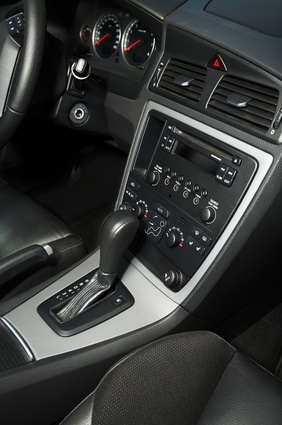
An automobile's air conditioning system provides cold, conditioned air to the cabin for comfortable driving. The system uses a refrigerant which will eventually need to be serviced to restore the system cooling capability to an optimum level. There are two types of refrigerant used in passenger vehicles, Dichlorodifluoromethane and 1, 1, 1, 2-Tetrafluoroethane, known as R-12 and R-134a respectively. R-12, commonly referred to by the brand name Freon-12 or simply freon, is only available to certified technicians in large quantities and has been banned in newly manufactured vehicles since 1995. Its replacement, R-134a, is readily available to anyone for automobile air conditioning servicing.
Turn off the automobile and open the hood.
Identify your air conditioner compressor mounted to the engine, then follow the lines emerging from it. One line has a 16-millimeter fitting while the other has a smaller 13-millimeter fitting. Remove the protective cap from the small fitting; this is your low side R-134a service fitting.
Put on safety goggles.
Close the valve on the servicing hose tightly to puncture the can's seal. Open the valve slightly then quickly close it again to discharge the air from the service hose.
Connect the end of the service hose to the R-134a service fitting.
Start the vehicle engine and set the air conditioning to its maximum cooling setting.
Open the valve on the servicing hose to full capacity. Allow the air conditioning system to suck in the refrigerant. The air blowing through the automobile's air conditioner vents should become colder as it is being serviced.
Close the valve when the gauge attached to the service hose reads between 25 and 40-psig. Disconnect the service hose from the low side R-134a service fitting, replace the protective cap, close the hood and turn off the engine.